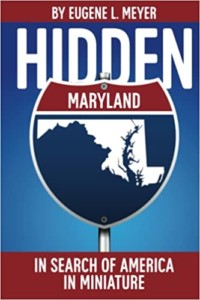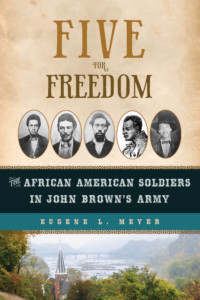The Attribution Scam. Where Are Standards?
It’s been many years since unattributed, anonymous quotes or statements were declared a capital offense in newspaper journalism.
The feeling was that if someone had something to say that merited inclusion in a story, he/she should be identified by name, or, if not by name, than by a description that could alert the reader to the source’s possible bias or motivation.
A worthy rule, no doubt. Why should sources be allowed to make anonymous negative comments or provide so-called “inside information” without being identified? For a time, the rule was seemingly enforced. No attribution, no quote, no unattributed ad hominem attack.
Reporters were directed to stand up to these unattributed cheap shooters. But, increasingly, sources demanded anonymity not just for critical quotes but for, well, just about anything.
Instead of hanging tough, the masters of the newspaper universe adopted a weasel way around their own hardline on attribution. Henceforth, reporters did not even have to identify an unnamed source by describing that person in enough detail to alert the readers. They could simply say what I increasingly find in such revered publications as the Washington Post and the New York Times. Such boilerplate language that has become the norm.
In today’s Post, for example, in a prominent front page story, I noted several workarounds.
Under the headline “Nikki Haley prepares to announce 2024 bid,” the print paper’s off-lead (and if you don’t know what an off-lead is, you probably never read the print paper and are an online-only reader), I found in the second paragraph (emphasis added):
“The video strategy, as described by multiple people briefed on the plans who spoke on the condition of anonymity because they were not authorized to talk publicly, is intended to drive attendance and enthusiasm for an in-person announcement event in the coming weeks.”
In the very next graph, the story continued with: “Advisors to these Republicans, many of whom spoke on the condition of anonymity to describe private conversations, said there is wariness about becoming an early target of former president Trump.” Really, what does the clause tell us? Nothing, really, but it appears to fulfill management’s mandate.
Jumping to page A5: “A person close to the Trump campaign, who like others spoke on the condition of anonymity to talk more freely, suggested that Haley’s early moves were an effort to make a mark before Sen. Tim Scott (S.C.), another potential candidate, gets in the race. ‘I guess the audition for Trump’s VP starts now,’ the person said.” Here, at least, there is some identification to alert the reader, but also that excuse mantra for not revealing too much.
“One person advising a would-be candidate said concern about Trump’s dominance has been driving discussions with candidates and donors, who want to know how rivals plan to get around trump.” One person? Advising which would-be candidate? More weasel words.
And, in the last column of this lengthy story, I found two workarounds that ill-serve the reader while granting anonymity to the sources. “As one advisor to a major GOP donor put it, ‘I don’t think anybody in our world has picked a horse yet.'” Was this worth granting anonymity?
And, in the next graph, “The senator from South Carolina is eyeing a run but is in no hurry to make a decision, said a person with knowledge of his thinking.” Perhaps the senator’s aide? Is this statement so essential to the story that the source gets to be anonymous. I think not.
In this lengthy story that we used to measure by column inches. I found six excuses for the flimsy attribution that neither served the reader nor enhance the credibility of the writer. My quick search on the Post website for the phrase “who spoke on the condition of anonymity” got 55 hits, most within the last two weeks.
Going back to 2005, the phrase has appeared in the Times on 24,066 occasions. The earliest mention I could find was in the public editor’s column on Nov. 20, 2005, under the headline: “Anonymity: Who Deserves It?”
Under guidelines adopted in 2004, public editor Byron Calame wrote, “Readers are to be told why The Times believes a source is entitled to anonymity — a switch from the previous practice of stating why the source asked for it.” Which, I observe, seems to be the current, default practice. The goal, as set forth by then executive editor Bill Keller, was “making the use of anonymous sources the “exception” rather than “routine.”
“With the reporter and the paper clearly responsible for explaining the reason for granting anonymity,” Calame wrote, “there’s a good chance that less central and more casual anonymous quotes will dry up faster. This would help limit confidential sourcing to the kinds of coverage where it’s vital: national security, intelligence, investigative articles and classic whistle-blower projects.”
A recent Times story I read about Michigan Democrat Debbie Stabenow’s decision not to seek re-election to the Senate, coupled with the news that U.S. Rep. Elissa Slotkin was considering running for her seat, said, “An aide to Ms. Slotkin, who spoke on the condition of anonymity because of the sensitivity of the discussions, said the lawmaker she was “seriously considering” running.”
Embedded in my screen version was this explanation from The Times:
What we consider before using anonymous sources. Do the sources know the information? What’s their motivation for telling us? Have they proved reliable in the past? Can we corroborate the information? Even with these questions satisfied, The Times uses anonymous sources as a last resort. The reporter and at least one editor know the identity of the source.
There is no longer a “public editor” at the Times, nor an “ombudsman” at the Post. One is left, therefore, only to wonder, as The Ear, a columnist in the long departed Washington Star would ask, “Where are standards?”
-30-
Black History Month this year began with the non-stop coverage of the funeral in Memphis for Tyre Nichols, a 29-year old Black man murdered by police in an alleged traffic stop near his home. That the officers charged are Black makes it no less horrific. Black Lives Matter still resonates, and the legacy of slavery remains a constant in our national life.
In my career, as a journalist and an author, I have sought to shine light on the untold or little known stories of Black Americans. My newest book, Hidden Maryland: In Search of America in Miniature, includes a chapter on Halltown, a Black community you never heard of and won’t find with GPS, in Prince George’s County, and another about Black watermen, a vanishing breed working on the waters of the Chesapeake Bay. Also, I write about the efforts to reconstruct a cabin in which enslaved persons lived, and about their descendants who still live nearby.

In Five for Freedom: The African Americans in John Brown’s Army, I write about the forgotten men who joined with Brown at Harpers Ferry in October 1859 in an ill-fated attempt to incite a slave rebellion and abolish the hated institution of slavery. I write about the world into which they were born and raised, their lives, their deaths and their descendants. Theirs is a story that continues today. They died to set us free, but the struggle continues.

Right on, Gene! Where are standards, indeed!
Thanks 4 your spot on message re “weaseling out” language & rueing the absence of rigor. I’m liking your book Five FOR Freedom. Thank you for bringing the lives of these heroes 2 my attention.